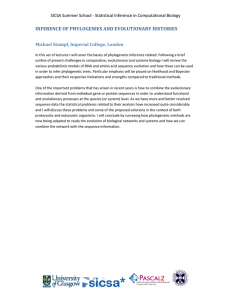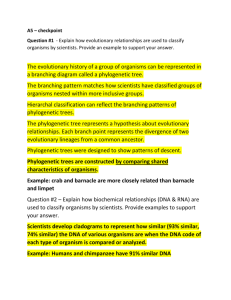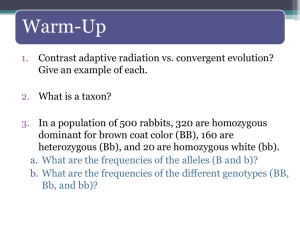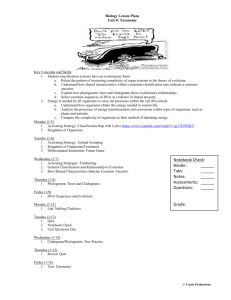The Tree of Life
advertisement
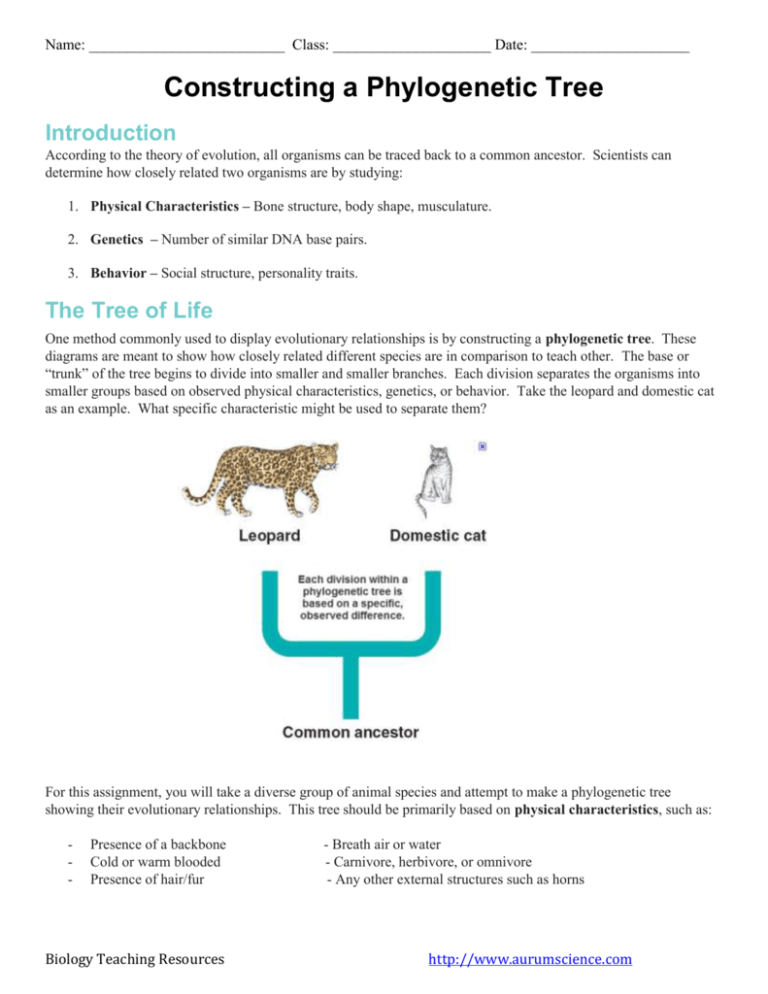
Name: __________________________ Class: _____________________ Date: _____________________ Constructing a Phylogenetic Tree Introduction According to the theory of evolution, all organisms can be traced back to a common ancestor. Scientists can determine how closely related two organisms are by studying: 1. Physical Characteristics – Bone structure, body shape, musculature. 2. Genetics – Number of similar DNA base pairs. 3. Behavior – Social structure, personality traits. The Tree of Life One method commonly used to display evolutionary relationships is by constructing a phylogenetic tree. These diagrams are meant to show how closely related different species are in comparison to teach other. The base or “trunk” of the tree begins to divide into smaller and smaller branches. Each division separates the organisms into smaller groups based on observed physical characteristics, genetics, or behavior. Take the leopard and domestic cat as an example. What specific characteristic might be used to separate them? For this assignment, you will take a diverse group of animal species and attempt to make a phylogenetic tree showing their evolutionary relationships. This tree should be primarily based on physical characteristics, such as: - Presence of a backbone Cold or warm blooded Presence of hair/fur Biology Teaching Resources - Breath air or water - Carnivore, herbivore, or omnivore - Any other external structures such as horns http://www.aurumscience.com Name: ___________________________ Class: ______________________ Date: ____________________ The Tree of Life 1. Detach the following page of animals from this assignment. 2. Individually cut out each animal, including the name. 3. Lay all the animals out on your desk and separate them into two groups by presence of a backbone. 4. On a separate sheet of paper, start drawing your phylogenetic tree like this: 5. Continue separating the animals into smaller and smaller groups. Draw each division into your tree. 6. When an animal occupies its own branch, glue it to the end of that branch on your tree. 7. Repeat for all the other animals in your collection. Page 2 Name: ___________________________ Class: ______________________ Date: ____________________ Animals Page 3 Name: ___________________________ Class: ______________________ Date: ____________________ Teacher Notes: One of the best ways to visualize evolutionary relationships is by drawing a evolutionary tree, also known as a phylogenetic tree or a "tree of life". This activity has students construct their own tree from a set of animals provided, using only specific, observable physical differences. This activity gives students an opportunity to classify organisms on their own, and begin to visualize the types of evidence used to show their evolutionary relationships. Due to the open-ended nature of this worksheet, students will come up with many different combinations and layouts. However, the end result should be an evolutionary tree that shows the basic relationship between each of the animals. Arthropods such as the spider and moth should be far apart from an aquatic mammal such as the walrus. This is also a good opportunity to gauge how well students understand the basis of different classifications, such as reptile, amphibian, and mammal. For further discussion: http://evolution.berkeley.edu/evolibrary/article/0_0_0/phylogenetics_11 Page 4


